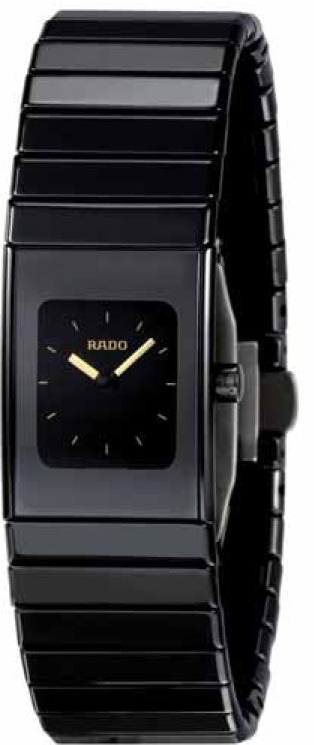Zirconium Oxide (aka Zirconia)
Advanced ceramics form a large part of the new man-made luxury materials market. Partly because of the associations that come from their use in high-end engineering applications and partly because they do look very advanced. A quality that is derived from how they are finished and polished, which ranges from a smooth, matt, cold surface to mirror-like dark polished colours that look like coloured chrome.
This visual association is not the only link with metals. On a practical level, advanced ceramics have two distinct properties that result in them being used in applications where metals have previously been used. One of these properties is their hardness in comparison to metals, which tend to have edges that will soften much more quickly than advanced ceramics when used. As well as for kitchen knives, zirconia pressings are used for punching out aluminium drinks cans in industrial production. This improves efficiency and cost effectiveness because tools last for 20 months without showing wear, compared to two months for traditional metal tools.
Zirconia and alumina are two of the most widely used advanced ceramics, zirconia being similar to alumina but slightly tougher – less brittle – and with a greater resistance to wear. Like alumina, zirconia can be polished to achieve a mirror-like reflective surface that resembles polished metal. It also offers chemical and corrosion resistance to temperatures well above the melting point of alumina.
Image: Rado watch

Key features
•Versatile processing
•Excellent hardness, 50% harder than steel
•Good corrosion resistance
•Slightly higher density than alumina
•Excellent electrical insulation
•Readily joined to metals
•Lower resistance to wear than alumina
•Brittle
•High resistance to thermal shock
•Melting point: 2549ºC (46200ºF)
Sources
Alumina is one of the most commonly used materials in the advanced ceramic industries and is available in a range of purities to suit different applications.
Cost
Price is dependent on grade, but is comparable with other high performance ceramics.
Sustainability issues
Zirconium oxide is non toxic and unlikely to cause harm to the environment.
Production
Zirconia, like alumina, can be extruded, dry – powder – wet compression moulded and sintered from powder. It can be machined, including diamond grinding, in its fired form. When formed and sold as a flat sheet it can also be laser cut. Due to this, variations on production of zirconia are suited to both one-off and high-run batch or mass production. It can be readily joined to metals using metallizing and brazing techniques.
The smooth, fine surface finish that can be achieved with zirconia, combined with its toughness make it an ideal ceramic for cutting blades and kitchen knives. It is used in high-end mobile phones from Vertu and for watches from Rado. It is also used in car oxygen sensors, which utilize a form of electrically conductive zirconia.
| + | – |
|
–Excellent electrical insulation –Extremely hard –Corrosion resistant –Versatile processing |
–Brittle –Lower resistance to wear than similar materials |
